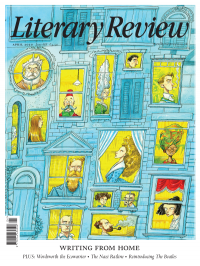Frank McLynn
Crazy Horse’s Last Stand
Lakota America: A New History of Indigenous Power
By Pekka Hämäläinen
Yale University Press 508pp £25
It may seem tiresome when a reviewer begins his piece with definitions, but in the case of Pekka Hämäläinen’s dense, erudite and difficult tome, this is necessary. And so, a soupçon of anthropology to start with. The Sioux, originally a hunter-gatherer people in the central Mississippi Valley, steadily migrated west. Once they reached the Great Lakes, they split into three branches: the Santee, who lived in Minnesota and Wisconsin, the Yankton and Yanktonai, who largely dwelled in the two modern Dakotas, and the Lakota, most numerous and successful of all, who for a century and a half dominated the high plains of Wyoming, Colorado and Montana. The Lakota are made up of seven subtribes: the Hunkpapa, Sicangu, Oglala, Sans Arcs, Minneconjou, Two Kettles and Sihasapa (known as the ‘Blackfeet’, but not to be confused with the entirely distinct Blackfeet tribe, traditional enemies of the Lakota). So, for example, of the famous Lakota chiefs, Spotted Tail was a Sicangu, Sitting Bull and Gall were Hunkpapas, and Red Cloud and Crazy Horse were Oglalas.
The rise of the Sioux, perhaps the most celebrated and powerful of all Native American confederations, owed everything to the horse (called the ‘sacred dog’ by the Sicangus), which transformed their society in the early 18th century and made them a nation of mounted raiders. The role of animals in warfare has been largely overlooked by historians. Camels, elephants and mules have all played a crucial role at times, but the hardy perennial is the horse, without which there would have been no Scythians, no Parthians, no Mongols – at least not as major forces. Horses, however, need a lot of care and attention, having to be broken, trained, foaled, gelded, protected, pastured and watered. Each horse needs twenty pounds of grass and ten gallons of water a day. This forced the Sioux, when not on the warpath (which was rare), to lead a hybrid lifestyle, part bison-hunting, part pastoralism. The ideal situation was fighting and raiding for half the year and lying fallow for the other half, but this was difficult to achieve.
Along with the horse, the Lakota depended on the bison, a single one of which could provide 650 pounds of meat. Yet the combination of bison and horses was one of the many causes of the Lakota’s ultimate demise as a warrior race. These two animals were competing species and

Sign Up to our newsletter
Receive free articles, highlights from the archive, news, details of prizes, and much more.@Lit_Review
Follow Literary Review on Twitter
Twitter Feed
How to ruin a film - a short guide by @TWHodgkinson:
Thomas W Hodgkinson - There Was No Sorcerer
Thomas W Hodgkinson: There Was No Sorcerer - Box Office Poison: Hollywood’s Story in a Century of Flops by Tim Robey
literaryreview.co.uk
How to ruin a film - a short guide by @TWHodgkinson:
Thomas W Hodgkinson - There Was No Sorcerer
Thomas W Hodgkinson: There Was No Sorcerer - Box Office Poison: Hollywood’s Story in a Century of Flops by Tim Robey
literaryreview.co.uk
Give the gift that lasts all year with a subscription to Literary Review. Save up to 35% on the cover price when you visit us at https://literaryreview.co.uk/subscribe and enter the code 'XMAS24'